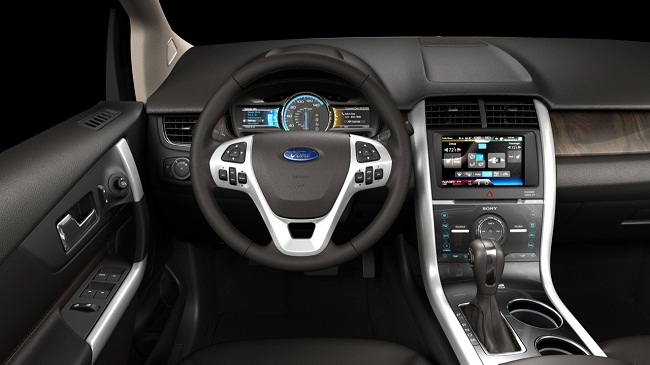By now, the illustrious “fourth screen†is a common term–that of the mobile device, still the holy grail for media companies and advertisers.
No ad to show here.
At the North American International Auto show(NAIAS) in Detroit, it became clear that the era of the “fifth screen†is upon us: The one inside peopleâ€
Ford, once known for classics like the Mustang, Cobra and GT then emerging with the family-friendly (and dull) Taurus in the 1980s and the Explorer in the 1990s, is helping to lead the charge.
It plans to make its MyFord Touch onboard navigation and communication system standard in 90 percent of its new vehicles by 2012. Â
It is difficult to imagine that even budget-priced vehicles will soon have touch-screen GPS, internet and music coming standard, but that seems to be the case.
Though Touchâ€
Based on a demo at NAIAS, the system has some handy features (and much improved from its first iteration) but still lacks an intuitive operating system. Our demonstrator touted the different ways the system can be accessed: Touch screen, voice and steering wheel console.
But as Consumer Reports published, more isnâ€
Unfortunately, Ford hasnâ€
The technology, which features screens in the dashboard and center console, is built on Microsoftâ€
In the field, it appears, Nuanceâ€
It required the demonstrator to repeat herself several times, leaning closer to the microphone with limited success. At one point, the system appeared to become overwhelmed by the demonstratorâ€
Later, as we drove a vehicle equipped with Touch on Fordâ€
“Voice recognition is not a perfect technology,†said Alan Hall, Ford’s Technology Communications Manager. “The car is a very unique environment so it’s very different than me standing here with a phone and talking into it.”
This is particularly problematic because Ford CEO Alan Mulally used his NAIAS keynote speech to stress the value of voice commands for using Twitter and playing music on Pandora while driving.
The company is slowly rolling out AppLink to its vehicles’ screens, which will tie smartphone apps to MyFord Touch.
Indeed, several automakers are betting that consumers will want to engage with social media on the road. While they may be right, the technology will have to be dead simple if people are to do so without crashing the car.
To be fair, AppLink’s Twitter functionality does look impressive, but we have to wonder if it would work as well over the noise of driving.
Of course, Ford is not alone in its limitations. Toyotaâ€
MyFord Touch isnâ€
Down the road, automakers may be able to build more intelligent onboard systems, creating a more flexible hands-free experience. That would require a vastly superior voice recognition system and a more flexible search platform, as well as an evolving, cloud-based library of places, commands and consumer reviews.
After all, what good is a navigation system that doesnâ€
Additional reporting (including videos) by Martin Carstens
